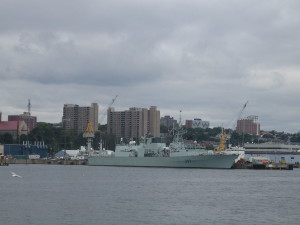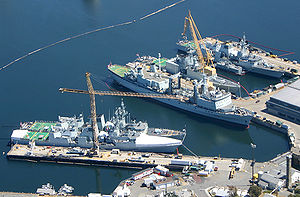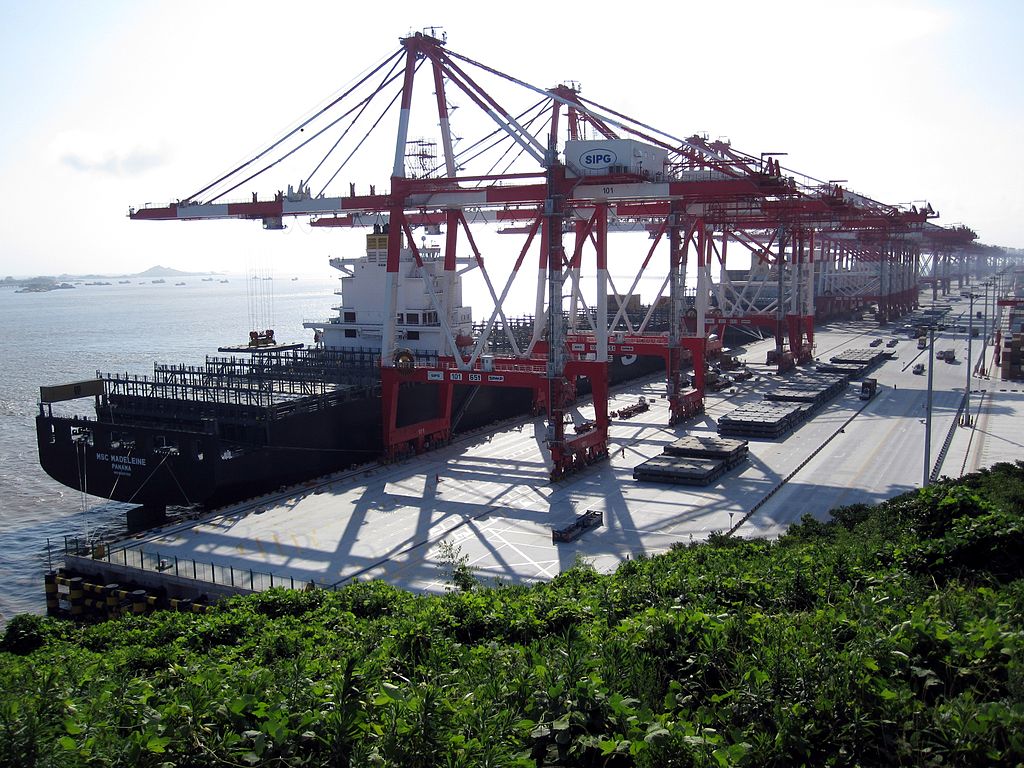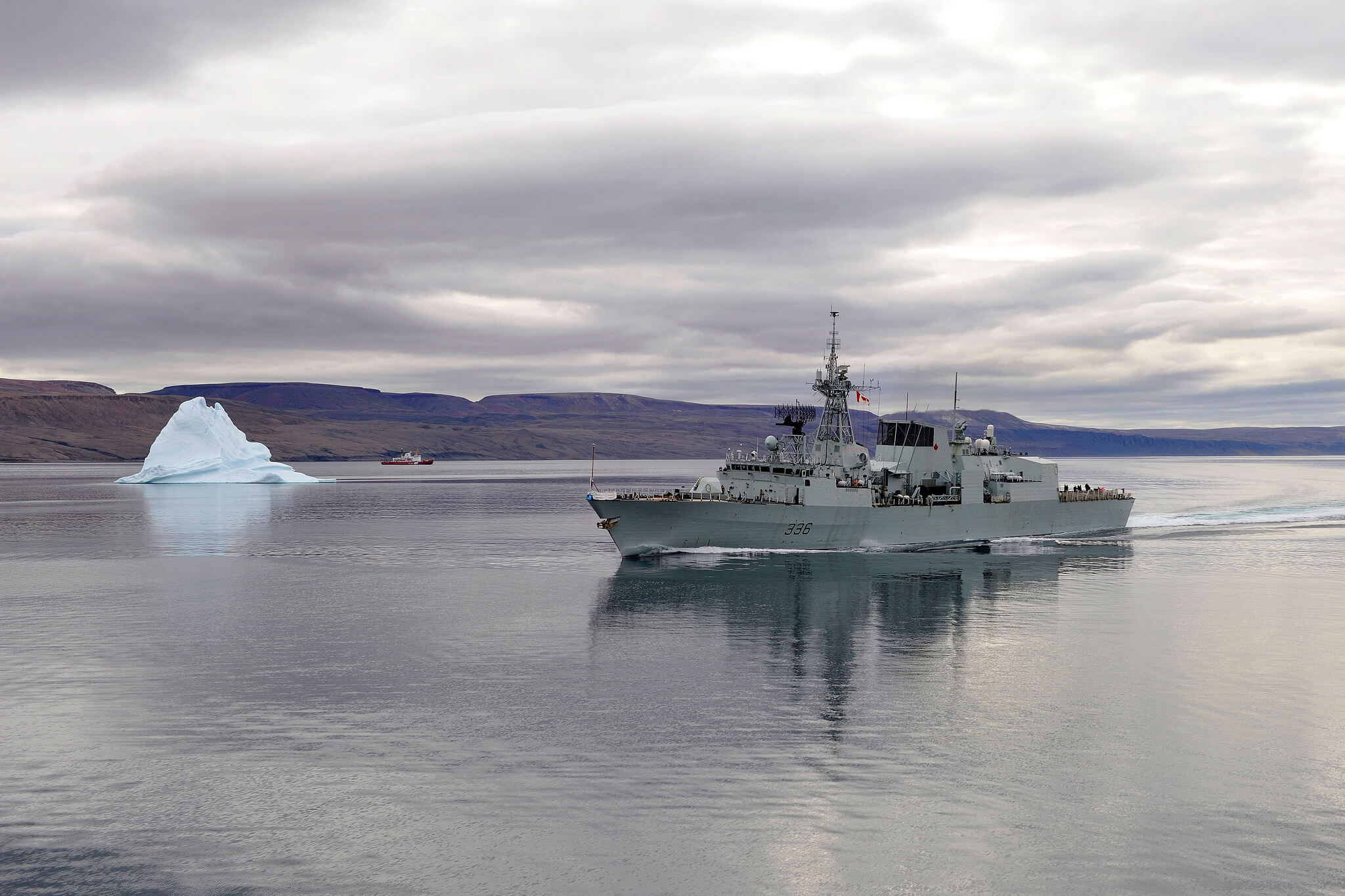(Read Parts I, II, III, and IV here.)
The procurement of a Wasp-class, Mistral-class, or the “Made-In-Canada-class”vessel each has its own pros and cons. The Wasp-class has very impressive sealift and aerial capabilities but requires a large crew to operate and is extremely expensive. The Mistral-class boasts nearly as impressive sealift and aerial capabilities and a smaller crew, but is also foreign built and expensive to fully equip. The “Made-In-Canada-class”can be tailored to the Royal Canadian Navy’s (RCN) exact needs and specifications and would bring numerous economic benefits to Canadians. It would also likely be extraordinarily expensive to design and build in Canada, given the RCN’s checkered procurement history.
After careful consideration of the advantages and disadvantages of each platform, the Mistral-class appears to be the best combination of cost and capabilities available to the RCN. It has comparable sealift and aerial capabilities to the Wasp-class but with a fraction of the crew and a smaller price tag. One of the main drawbacks of the Mistral-class is that it is built in France, so its procurement would go against the principles of the Canadian government’s National Shipbuilding Procurement Strategy (NSPS). However, the procurement of amphibious assault ships by one of our allies may show Canada how we can procure a foreign-made vessel while still bringing Canadians the economic benefits of its construction.

Australia is currently nearing the completion of the construction of two of its own amphibious assault ships, the Canberra-class, based on Spain’s only amphibious assault ship, the Juan Carlos I. The Canberra-class vessels are built in two phases. The hull and flight deck are built in Spain by Navantia, a Spanish shipbuilding firm, and then transported by sea to Australia where BAE Systems Australia installs the island superstructure and finishes the interior of the vessels. It is this process of joint construction that could make the procurement of the Mistral-class feasible to the RCN and Canadian government.
When procuring a French designed Mistral-class vessel, the RCN could take the same route as Australia and stipulate that part of the vessels must be constructed in Canada. The hull and flight deck would be constructed in France by DCNS and STX Europe while a Canadian company would finish off the interior and island superstructure. This Canadian company would most likely be Halifax-based Irving Shipbuilding Inc. as they have already been given contracts to build 21 combat vessels for the RCN under the NSPS. This would allow Canada to receive some of the economic benefits of the construction of these vessels while still getting the benefits of a proven foreign design.
There are operational matters to examine as well, namely where would Canada’s amphibious assault ship be stationed? There are two candidates: CFB Halifax, home of Maritime Forces Atlantic, and CFB Esquimalt, home of Maritime Forces Pacific. Numerous operational factors need to be considered when choosing a home port for the vessels. Stationing the vessel in Halifax allows for better access to the Canadian Arctic and global trouble spots in Africa and the Middle East whereas stationing it in Esquimalt allows for better access to the Asia-Pacific region.

The vessel’s homeport is also very symbolic of Canada’s future intentions. Having Halifax as the ship’s home would reaffirm Canada’s commitment to our European allies and our Atlantic history. Conversely, stationing it in Esquimalt would cement Canada’s status as a “Pacific nation” and show that Canada is recognizing the growing importance of the Asia-Pacific in international affairs. Given the fact that the RCN’s Pacific fleet has fallen on hard times recently, stationing the amphibious vessels at CFB Esquimalt would help rejuvenate the Pacific fleet and signal Canada’s commitment to an increasingly important region. There is a heated rivalry between the two ports and the economic benefits that come with such a large ship and its crew mean that the decision of where to station it is likely going to be politically motivated as well.
The RCN has a long and storied history defending Canada’s coastlines and protecting its interests abroad. The RCN has fallen on hard times recently but it is possible to reinvigorate one of Canada’s most important armed services with the procurement of a Mistral-class amphibious assault ship. It would instantly enhance the RCN’s blue-water naval capability and give Canadians a reason to once again be proud of their navy. As the RCN currently has a number of procurement projects underway to replace its ageing fleet, a Mistral-class vessel could serve as the flagship of a modern and capable RCN. This endeavour would be expensive but the benefits it would provide for Canada are extensive. Canada deserves a navy that lives up to its grand history; the procurement of a Mistral-class vessel would achieve this objective.




